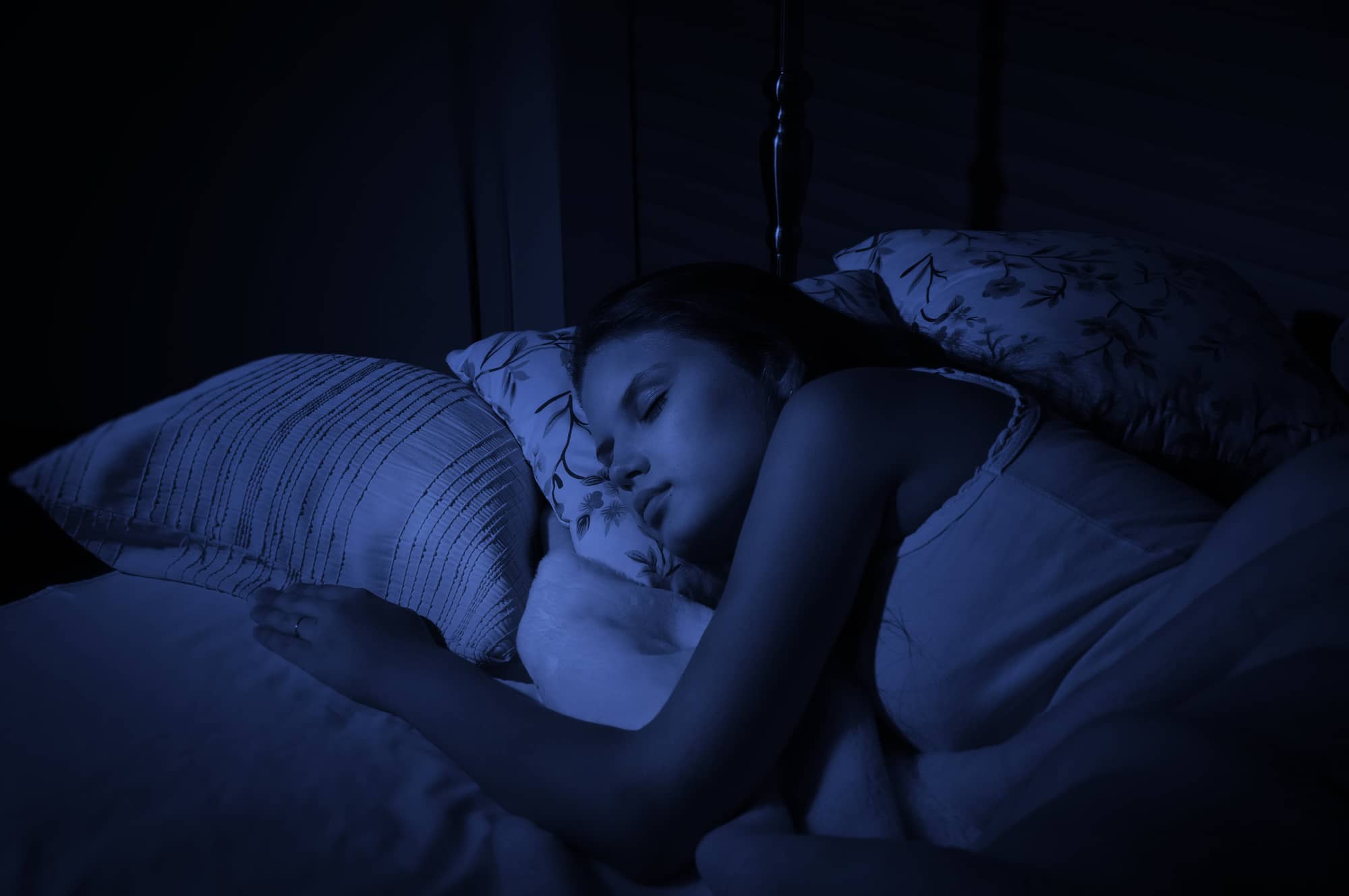Sleep is one of the most important tools that people have when it comes to staying healthy. The more restful sleep you can get into your routine, the easier it is to prevent and overcome illness.
Unfortunately, figuring out how to achieve the perfect sleep schedule isn’t always as simple as it seems. Traditionally, neuroscience and research into biology have shown us that human beings need an average of at least 7 hours of uninterrupted sleep every night to remain fit and healthy. However, there could be more than one way to get the rest that you need.
Solutions like the Everyman sleep cycle, a kind of polyphasic sleep that focuses on dividing your day into multiple rest periods, have emerged as a possible way to boost productivity for today’s time-pressed entrepreneurs and those with a busy lifestyle. Today, we’re going to take a closer look at the different kinds of sleep schedules that people can embrace to improve their health, productivity, and performance.
Sleeping Patterns: The Basics

The first thing that we need to look at before we dive into the different kinds of sleeping strategies we can incorporate into our lifestyles, is the types of sleep patterns people have.
Human beings have a natural biological clock, called a circadian rhythm. This rhythm helps to dictate how much you need to sleep during a 24-hour period. One of the most common sleep cycles most people follow is the monophasic sleep pattern. The monophasic sleep strategy is commonly referred to as “normal” slumber.
With monophasic sleep, you have one period of long rest each day, usually during the night. You’ll set a specific schedule that works for your daily routine, usually avoiding any naps and other sleeping sessions throughout the day.
There are other kinds of sleeping cycles available, too, such as biphasic sleep. In biphasic sleep, people stay asleep for a long duration at night- usually up to 6 hours. They also have a shorter period of sleep during the day, such as 20-minute naps in the middle of the day. However, siesta periods can also last a lot longer – for up to 90 minutes.
A 90-minute nap gives you the opportunity to go through a complete cycle of sleep, which can leave you feeling more rested and refreshed. Some people believe that biphasic sleep is healthier than the monophasic sleep pattern and that it’s more natural – as it’s likely to be what we did before we started living in urban environments.
Segmented sleep, on the other hand, is a type of biphasic sleep pattern, when you have two sleep periods at night. You’ll sleep for 6 and 8 hours every night with this strategy, but you’ll have two shifts of sleep, with a phase of waking in between.
Polyphasic Sleep and the Power of Naps
For some, there’s a completely different kind of sleeping solution available that focuses on getting more naps throughout the day. Polyphasic sleepers believe in the power of napping to improve learning ability, alertness, mood, and memory.
Experts believe that before the world became industrialized, it was normal for humans to have various sleep phases throughout the day. People would generally sleep in two segments throughout the night. This didn’t mean that everyone had insomnia – just that humans didn’t sleep for as long as they do now in one complete session.
That takes us to the world of nap-based polyphasic sleeping, where people can rest 4 to 6 times each day. There are many different ways to fall asleep with a polyphasic cycle. For instance, the Everyman sleep schedule focuses on providing a long sleep time of 3 hours, with 3 naps lasting 20 minutes spread throughout the day.
Polyphasic cycles also include the Uberman cycle, where individuals get only 3 hours of sleep each day in the form of 30-minute naps every 6 hours. There’s also the Dymaxion cycle where you get only 2 hours of sleep every 24 hours, in the form of 30-minute naps taken every 6 hours or four times per day.
These different kinds of sleeping cycles might sound like sleep deprivation to those who hate the idea of getting fewer hours of sleep each night. However, no two people have the exact same sleep requirements. While one person might need 8 hours of solid sleep to work at their best, others only need 5 hours with a short nap during the day.
Understanding the Everyman Sleep Cycle
One of the most common sleep cycle choices for people using the polyphasic strategy is Everyman. This is the choice that most will go for when they struggle with the adaption difficulty of the nap-based Uberman cycle. It’s very difficult to get used to moving from a period of long sleep each night to only 6 short naps per day.
When the concept of the Uberman cycle first appeared, it was said that people took around one week to get adjusted to the new schedule. However, the difficulty of the schedule often meant that people ended up feeling terrible. Even with the multiple nap times, they couldn’t get their body to adjust to this new strategy and often struggled with the symptoms of sleep deprivation.
The Everyman cycle was designed as a way to modify the Uberman approach and make the latter easier to implement. Rather than solely relying on a person’s ability to take a nap, this approach introduces a longer core sleep within the cycle that lasts for two hours or even three. This makes it much easier to embrace a new sleeping pattern. You don’t have to rely on just short naps of mostly light sleep to keep you feeling energetic.
Eventually, some individuals may decide to progress from the Everyman cycle into another strategy that requires more naps and less of a central sleep phase.
Variations of the Everyman Sleep

If you’re planning on exploring the Everyman slumber cycle for yourself, then it’s worth noting that there’s more than one way to use this strategy. When experts originally tried to fall asleep according to the Uberman schedule, the result was usually a huge crash. In an attempt to optimize sleeping schedules, Everyman became the ideal solution. It was adjusted to combine core slumber periods with naps spread throughout the day.
The Everyman plan (rights reserved) overcomes the adaption difficulty of the Uberman strategy by giving people the amount of core sleep that they still need. There are different types of sleep cycles in the Everyman strategy to consider, including:
Everyman 1: The Everyman 1 sleep option consists of a total of 6 hours and 20 minutes of sleep per day. The core sleep period lasts for 6 hours, and you also get a nap lasting 20 minutes during the day, after you’ve been active for 8 hours. This is an easier strategy for most people to implement compared to other sleeping schedules, and it facilitates REM sleep cycle too. The REM stage of sleep is characterized by dreaming and an increase in vital signs. If you decide to try this version of the Everyman plan, most experts recommend having your nap around lunchtime.
Everyman 2: This is another adaptation of the original Everyman sleep cycle. In this option, the core sleep period that lasts for 4.5 hours. You also get two nap periods of 20 minutes each – leading to a complete sleep time of 5 hours and 10 minutes. This strategy generally works well for students who need to nap before and after their classes. It could also be a useful way to ensure adequate rest if you have part-time jobs that only allow you to have a nap or a couple of brief naps during the day.
Everyman 3: This variation is one of the more difficult options for anyone considering a new method of rest. The Everyman 3 requires four hours of sleep in a 24-hour period with one core sleep nap of 3 hours. There are also three additional REM sleep naps that last twenty minutes each time. Currently, Everyman 3 is one of the most difficult schedules for many people to attempt, which is why a lot of people will consider other variations first. You may also try having 3 hours of slumber and a short nap of 30 minutes with this option, too, to help you get used to it.
Everyman 4: The particular option is the most complicated option of all; it is also the most difficult to get used to. This strategy consists of just one core sleep period that can last for up to an hour and a half. You can also use four 20- minute nap periods throughout the day to help you manage your energy levels. In total, you still get less than three hours of sleep.
Benefits of the Everyman Sleep Schedule
You might be wondering why you would even consider changing your sleep strategy so drastically with something like the Everyman routine. The adaptation difficulty experienced while on the Everyman sleep schedule can leave many feeling exhausted at first, even if you love having a nap from time to time.
Before you think about completely changing your sleep routine to get more nap time, you’ll need to weigh the advantages and disadvantages. After all, there are benefits to this approach, but there are also downsides to following this sleeping pattern.
For instance, if you fall asleep less often at night, and engage in plenty of nap periods throughout the day, you should spend more time awake. Theoretically, this means that you should end up with better productivity, and more time to get things done. You can also have longer periods of deep sleep when you do doze off because you will be slightly deprived. This means that you’re not going to struggle to get your 4 hours of sleep– as you should drift off immediately.

This cycle gives you more time for your hobbies and other activities. Plus, you can adjust your sleep and naps to suit different working schedules, which could be ideal for professionals who work in shifts. You can also reset your adenosine levels. Adenosine is the chemical in your body that’s responsible for transferring energy. The natural painkiller produced by the body can assist with helping to widen your blood vessels and manage your heart rate.
Another point worth noting before you start your next nap, is that this kind of sleep strategy could also improve your chances of lucid dreaming, due to a lack of REM sleep and fragmentation in your naps.
Problems Associated With Polyphasic Sleeping
Although making the decision to sleep 4 hours and fit a nap into your schedule every so often might sound like a good way to boost your productivity, it’s not the right strategy for everyone. The body doesn’t always adapt to getting only four hours of sleep for every 24-hour period. If you try to even reduce your hours of sleep to just three hours through a handful of naps, then the adaptation difficulty gets even worse.
When you begin trying new sleeping styles, especially those with plenty of nap times, there’s a very good chance that you’ll initially experience some of the common symptoms of sleep deprivation. You might notice appetite changes or sudden mood swings. You might even end up with severe episodes of mania and depression.
Even with the occasional nap and light sleep to help you, there’s a good chance that your sleep issues will lead to changes in the way that your body releases hormones, as you can’t release as many hormones when you nap. This could be a problem for growing children and young adults. Sleeplessness can also lead to high levels of ghrelin and decreased leptin levels, resulting in increased hunger.
Sleep Fragmentation and Napping

Many people will find a nap-based sleeping pattern very challenging. To begin with, there will be noticeable side effects. For instance, if you don’t get enough sleep every night with the Everyman strategy, you will be prone to illnesses because your immune system won’t be working as well as it should. In addition, if you’re trying to adapt to the new schedule when you’re still working, then your sleep needs could make you into a less productive worker. You could find that sleeplessness causes you to fall asleep in the middle of the day.
If your new sleeping schedule doesn’t immediately make you feel refreshed and awake, then you would probably drink coffee for that much-needed jolt, increasing your chances of becoming addicted to caffeine. It is also worth noting that you might even find it increasingly difficult to manage your personal relationships, as you will often have different periods when you need to nap when other people are awake.
What’s more, if sleep fragmentation becomes too great, you will be unable to make decisions properly when you are presented with difficult situations. Sleeplessness also makes it dangerous for you to be behind the wheel.
Do Alternative Sleep Cycles Work?
If you’re planning on using a new sleeping pattern to change your life and boost your productivity, then you’re probably going to want to know for certain if it will work. Before you engage the services of professional sleep coaches or and give your email address to sleep websites, you need to know exactly what you’re getting into.
The most important thing to keep in mind is that people have different sleep needs. Everyone has different requirements when it comes to the amount of sleep their bodies require to function optimally. Someone whose work and lifestyle are based on rotational shift systems might prefer the option to space their day out with a regular nap. However, those who need to be awake bright and early each morning for a long day of tasks won’t be able to take a nap as frequently. For these people, one long core sleeping period might be the ideal way to get plenty of rest without a need for daytime naps.
There’s nothing to say that every human being needs to get the same amount of sleep and the same kind of sleep every day to be healthy. Although we know that we need sleep, choosing to nap rather than getting all of your sleep in one chunk could be a healthy alternative to some individuals. After all, studies do continue to show us that naps can help improve productivity and focus when they’re used correctly. Sometimes, a nap really is all you need to get through the day, although your core sleeping period is crucial for hormone release at night.
Should You Try a New Schedule?
The Everyman sleep cycle was designed to offer an easier way of exploring the Uberman cycle. If your daily schedule allows you to have your core sleep at night in addition to a few daytime nap periods, then you might want to consider this unique schedule. However, it’s worth noting that you will be facing complex challenges along the way.
Not everyone finds the time to nap during the day. Even if you do get enough time for naps, you might not be able to discipline yourself into sticking to a schedule that you’ve laid out for yourself. Additionally, naps don’t always give you the extra boost you need when you’re feeling truly sleep-deprived.






